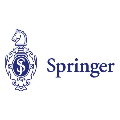Studying distributed computing through the lens of algebraic topology has been the source of many significant breakthroughs during the last two decades, especially in the design of lower bounds or impossibility results for deterministic algorithms. This paper aims at studying randomized synchronous distributed computing through the lens of algebraic topology. We do so by studying the wide class of (input-free) symmetry-breaking tasks, e.g., leader election, in synchronous fault-free anonymous systems. We show that it is possible to redefine solvability of a task "locally", i.e., for each simplex of the protocol complex individually, without requiring any global consistency. However, this approach has a drawback: it eliminates the topological aspect of the computation, since a single facet has a trivial topological structure. To overcome this issue, we introduce a "projection" $\pi$ of both protocol and output complexes, where every simplex $\sigma$ is mapped to a complex $\pi(\sigma)$; the later has a rich structure that replaces the structure we lost by considering one single facet at a time. To show the significance and applicability of our topological approach, we derive necessary and sufficient conditions for solving leader election in synchronous fault-free anonymous shared-memory and message-passing models. In both models, we consider scenarios in which there might be correlations between the random values provided to the nodes. In particular, different parties might have access to the same randomness source so their randomness is not independent but equal. Interestingly, we find that solvability of leader election relates to the number of parties that possess correlated randomness, either directly or via their greatest common divisor, depending on the specific communication model.
翻译:通过代数地形学的透镜进行分布式计算研究是过去二十年来许多重大突破的源头,特别是在设计下限或确定性算法的不可能结果方面。 本文的目的是研究通过代数地形学的透镜进行随机同步分布式计算。 我们这样做的方法是研究广泛的类( 无投入的)对称破碎任务, 例如, 领导选举, 在同步的无错匿名系统中进行。 我们显示, 有可能重新定义“ 本地” 任务的随机可解性, 也就是说, 用于协议性综合体的每一种简单度或不可能的结果, 而不需要任何全球的一致性。 但是, 这个方法有一个背影: 它消除了计算中的表面分布式方面, 因为一个单一的表面结构有一个微不足道的表层结构。 为了克服这个问题, 我们引入了一个“ 预测” $\ pion 和 输出复合体的“ $\ pue $ $ ” 的“ ” 。 每一个简单 $\ sigma $ 都在一个复杂的访问源中找到, $\\ gigma $ ; ; 后一个丰富的直观的直径直径直观结构结构结构结构, 以取代了我们所缺的直观的直观的直观的直观选择, 。 。 直观的直观的直观的直观, 。




